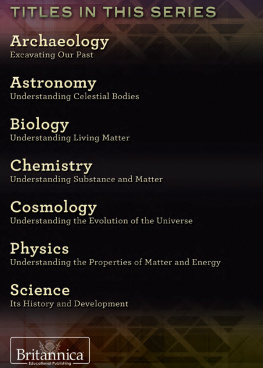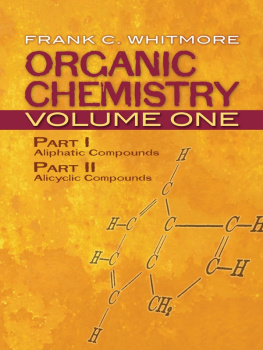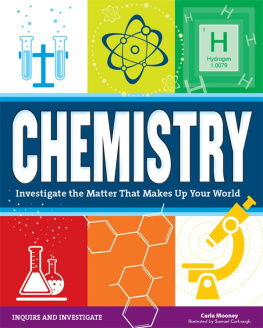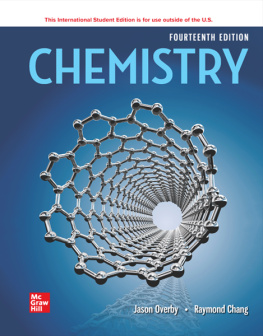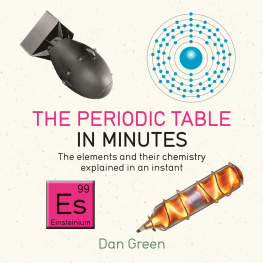

Published in 2015 by Britannica Educational Publishing (a trademark of Encyclopdia Britannica, Inc.) in association with The Rosen Publishing Group, Inc.
29 East 21st Street, New York, NY 10010
Copyright 2015 by Encyclopdia Britannica, Inc. Britannica, Encyclopdia Britannica, and the Thistle logo are registered trademarks of Encyclopdia Britannica, Inc. All rights reserved.
Rosen Publishing materials copyright 2015 The Rosen Publishing Group, Inc. All rights reserved.
Distributed exclusively by Rosen Publishing.
To see additional Britannica Educational Publishing titles, go to rosenpublishing.com.
First Edition
Britannica Educational Publishing
J. E. Luebering: Director, Core Reference Group
Anthony L. Green: Editor, Comptons by Britannica
Rosen Publishing
Hope Lourie Killcoyne: Executive Editor
Kathy Campbell: Senior Editor
Nelson S: Art Director
Nicole Russo: Designer
Cindy Reiman: Photography Manager
Amy Feinberg: Photo Researcher
Introduction and supplementary material by Kristi Lew
Library of Congress Cataloging-in-Publication Data
Chemistry: understanding substance and matter/edited by Russell Kuhtz.First edition.
pages cm.(The study of science)
Audience: 7-12.
Includes bibliographical references and index.
ISBN 978-1-62275-416-8 (eBook)
1. ChemistryJuvenile literature. I. Kuhtz, Russell, editor.
QD35.C49 2015
540dc23
2014006448
On the cover:agsandrew/Shutterstock.com; cover and interior pages borders and backgrounds iStockphoto.com/LuMaxArt
CONTENTS

Students in chemistry class learn that chemistry helps them recognize how the differences in the properties of matter relate to what the matter is composed of. Jon Feingersh/Blend Images/Getty Images
W hy do onions make people cry? What makes fireworks explode? How do rechargeable batteries recharge? All these questions and many more can be answered with one simple word: chemistry. Chemistry plays a very large role in everyday life. Without it, bread would not rise, cleaners would not clean, and life itself would not exist.
Chemistry is the study of matter and the changes that matter undergoes. Anything you can see, touch, smell, or taste is made up of matter. An airplane is matter. An ant is matter. The air that surrounds you is made up of matter, too, although you cannot see it. Matter is anything that has mass and occupies space. Sound and light, though, are not matter. Unlike air, they do not have mass or take up space. A pure substance is matter that has a specific composition and definite properties. Elements and compounds are pure substances, but mixtures, such as apple juice, are not. Apple juice is a mixture of many pure substances, such as water, sugars, and vitamins. The chapters in this book introduce the major concepts of the physical and chemical properties of matter, including characteristic properties, the use of chemical analysis, and the physical and chemical changes that occur on the molecular level. You will also investigate the classification of matter according to its chemical composition, by element, compound, and mixture.
All matter consists of very small building blocks called atoms. Chemists study how atoms interact with one another. These interactions affect everythingthey cause plants to grow, fireflies to glow, and bread dough to rise. They govern how the food you eat is turned into energy, and they are the reason that the leaves on some trees change color in the fall.
Why should you study chemistry? People in many professions, including medicine, environmental science, and marine biology, need a good working knowledge of chemistry. But they are not the only ones. Chemistry is very important in todays society. To be an informed consumer, you need to know what goes into the food you eat, the beverages you drink, and the clothes you wear. Do you know how much fertilizer is needed to make your lawn green and how much is too much? Do you know which household chemicals are safe to combine and which are not? Studying chemistry can help you answer these questions and many others. For this reason, everyone could benefit from knowing a little bit about chemistry and its underlying concepts.
Over time, scientific knowledge builds on itself and the study of chemistry is no exception. The discovery of the atom and the investigation of how atoms interact with one another have changed the world. Chemists today strive to make the world a better place by studying new materials that can make life easier, protect the environment, and provide energy that humans can use.
In this volume, you will be treated to an overview of the history and concepts you may encounter in an introductory chemistry course. People use chemicals every day when they cook, clean, or take medications. Chemical reactions happen all around you as you breathe, eat, or sit to read. As your understanding of chemistry grows, you will see that chemistry helps explain the world you live in, and to varying degrees, we are all chemists.
T he science of chemistry is the study of matter and the chemical changes that matter undergoes. Research in chemistry not only answers basic questions about nature but also affects peoples lives. Chemistry has been used, for example, to make stronger metals, to enrich soil for growing crops, to destroy harmful bacteria, and to measure levels of pollution in the environment. It has also made possible the development of plastics, synthetic fibers, and new medicines.
Products produced by the chemical industry are an ordinary part of our daily lives. The chemical industry converts raw materials, such as water, salt, metals and minerals, petroleum, coal, natural gas, plant cellulose and starch, and atmospheric gases, into other products. Some products require much more processing than others before they are subsequently used by manufacturers and other industries. Manufacturers use chemical products to make metal and paper products; wallboard, pipe, insulation, and other construction materials; polymers for electronic devices, bottles, films, paints, and other items; and fibers for carpets and fabrics. A few examples of other chemical products that are used by consumers include medicines, dyes, paints, fertilizers, shampoos, detergents, waxes, perfumes, cosmetics, and flavorings.

A chemical companys researcher conducts experiments to recover traces of precious metals that are contained in the industrial water that was used during the recycling of electronics. Marc Preel/AFP/Getty Images
The work of chemistry is generally described as analysis and synthesis. Chemists analyze substances by breaking them down to find out what they are made of. Chemists synthesize substances by putting them together in different, possibly more useful combinations. Assisted by specialized instruments and computers, chemists study materials as small as single atoms and as large and complex as DNA (deoxyribonucleic acid), which contains millions of atoms.

